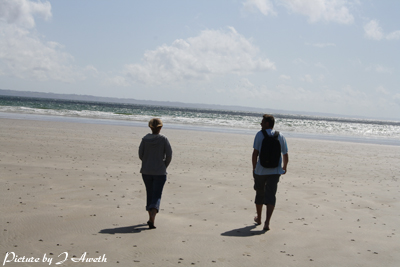Zanzibar is a land of extremes. It is where visitors can experience traditional music and dance, water sports, clear azure seas, cordon-blue sea food, abundant marine like, modern discotheques, ancient history, incredible coral reefs and rare terrestrial wildlife. The friendly local people are only too pleased to share their history and heritage with you and to escort you on tours around the islands. Visits to ancient ruins and buildings, trips to spice plantations and lazy days on the spectacular beaches bordering the azure Indian Ocean, all add to the magic, that is Zanzibar.
Unguja (popularly known as Zanzibar)
The Ugunja Island stretches about 95 kms from north to south and is located 35 kms from the mainland Tanzania. Few countries in the world can equal Zanzibar's long fine white sand beaches, which lead into warm aquamarine waters and provide the back drop for excellent diving and snorkelling. It is these qualities among others, that make the island one of the most popular tourist destinations worldwide.
Stone Town Tour (also called Unguja Town or Zanzibar town)
In Stone Town, every corner you turn offers a new, exotic scent. The Stone Town was declared a UNESCO World Heritage Site in 2,000 and was praised by UNESCO as "an outstanding material manifestation of cultural fusion and harmonization". If you choose to explore the Stone Town. |
 |
here are some of the attractions you will see
1. Stone Town Cultural Centre
This is a grand four-storey building found near the sea front along Mzingani road. It was originally built as a private residence, but was later used as a dispensary during colonial time
2. Darajani Market
It is a lively place to visit even if just to look around. It is located near the bus station along Greek road
3. Great Slave Market
The present Anglican Cathedral Courtyard was previously a home to the Great Slave Market for the whole of East Africa, and the source of Zanzibar's commercial success during the 19th century. At its peak, up to 60,000 slaves passed through the market each year. The Anglican Missionary Hospital is constructed on top of the old slave chambers. Tours are available for both, the slave chambers and the cathedral.
4. Livingstone's House
It was built around 1,860 for Sultan Majid and was used by many missioneries and explorers as a starting point.
5. National Museum (or House of Peace)
This is a small domed-building with a lovely garden. It includes sections on orchaeology, early trade and ships, slavery, palaces, mosques, sultans explorers, clove oil production, traditional crafts and household items, among others
6. Palace Museum
This is a large white building that was formerly the official residence of the Sultan of Zanzibar. Visitors to the museum can see much of the Sultan's furniture and other possessions that survived the revolution.
|
 |
7. House of Wonder
This is a large square-shaped building that dominates the skyline of Stone Town. Outside the building are three canons that date back to Portuguese times.
8. Arab Fort
Built between 1698 and 1701, the Fort is situated next to the House of Wonders. The Fort is open to visitors and now contains shops, a café and an open-air theatre
9. Dhow Harbour
It lies fifty meters inside the port gates, featuring traditional dhows and a lively wharf.
10. Jamhuri Gardens
These gardens feature a nightly market where fresh sea food, kebabs, sugarcane juice and ice cream are sold.
Beach Tour
Zanzibar's beaches are equally magnificent, the perfect place to relax after exploring Stone Town. Wander to the west coast of Zanzibar to enjoy Mangapwani beach and the east coast to find Matemwe, Pwani Mchangani, Kiwengwa, Uroa, Bwejuu and Jambiani beaches.
|
